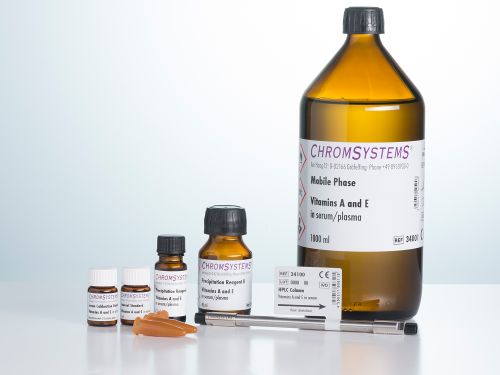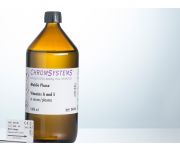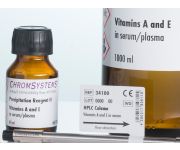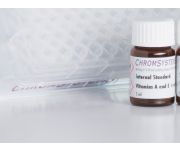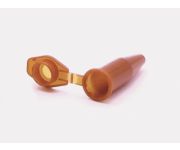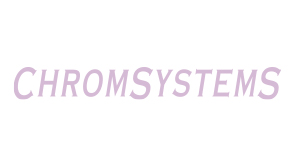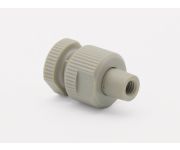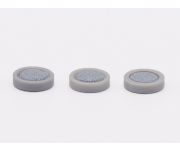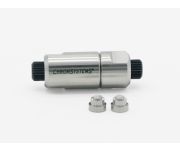Vitamins A and E in Serum/Plasma - HPLC
2 specific precipitation steps
Easy handling
Low costs per test
CE-IVD validated product ready for IVDR within timeframes and transition periods specified by the IVDR 2017/746
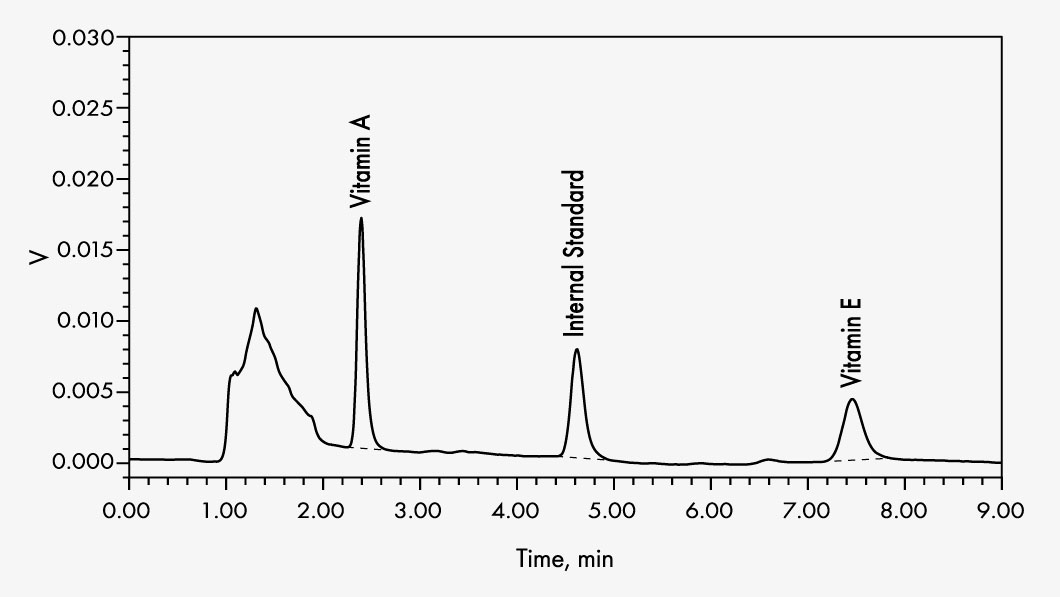

Vitamin A
Vitamin E
Clinical relevance
Vitamins A and E are fat-soluble vitamins, which perform important functions in the body.
Vitamin A plays an important role in vision, bone metabolism, and the synthesis of steroid hormones. Deficiency of vitamin A can lead to night blindness, skin dehydration, and hair loss.
Vitamin E protects, among others, unsaturated fatty acids in the cell membranes and the LDL cholesterol from attacks by reactive radicals, which can occur as a result of increased oxidative stress in the body. Deficiency of vitamin E can lead to permanent joint pain, making the determination of vitamin E levels essential in this case.
However, overdoses of these vitamins may cause hypervitaminosis with intoxication symptoms. In addition, chemotherapies should not be "accompanied" by extra vitamin supplements – especially high doses of vitamins A and E may limit the success of treatment.
Product advantages
- Specific method
- Easy sample preparation
- Low analysis costs
This established kit allows the simultaneous analysis of vitamins A and E in serum/plasma in a single isocratic HPLC run with UV detection. An easy sample preparation is initiating the effective protein precipitation step. A stable internal standard is used for precise quantification.
Chromsystems offers additional kits for the fast and efficient determination of vitamins A and E. You can choose between several options depending on the device capabilities (HPLC or UHPLC) and the sample quantities in your laboratory. Alternatively, the kit 34000/Premix with simplified sample preparation in premixed tubes is available, as well as the 34900/UHPLC kit for higher sample throughput and using UHPLC determination. Our kits are also available with automated workflow (34700/F and 34900/F).
| Method of Analysis | HPLC |
|---|---|
| Number of Tests | 100 |
| Please note | The freely available information on this website, in particular on the sample preparation, are not sufficient to work with our products. Please read instructions and warning notices on products and/or instruction manuals. |
| Lower Limit of Quantitation | Vitamin A: 0.02 mg/l |
| Upper Limit of Quantification | Vitamin A: 0.02-5.0 mg/l |
| Intraassay | Vitamin A: CV ≤ 2.5 % Vitamin E: CV ≤ 2.4 % |
| Interassay | Vitamin A: CV ≤ 5.0 % Vitamin E: CV ≤ 4.9 % |
| Recovery | Vitamin A: 106 %; Vitamin E: 101 % |
| Specimen | Serum/Plasma |
| Sample Preparation |
|
| Run Time | approx. 9 min |
| Injection Volume | 50 µl |
| Flow Rate | 1.5 ml/min |
| Column Temperature | ambient (~ 25 °C) |
| Gradient | Isocratic |
| Wavelengths | 325 nm, after 3.5 min switch to 295 nm |
| Additional Info | For the analysis any isocratic HPLC system with UV detector is suitable. For simultaneous analysis of the vitamins A and E, a detector with programmable wavelength switching is very useful as these vitamins are detected at different wavelengths. |
| Parameters | Vitamin A (Retinol), Vitamin E (α-Tocopherol) |
-
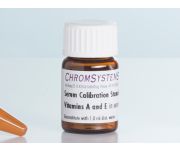 Vitamins A and E Serum Calibration StandardOrder no.: 34004Vitamins A and E in Serum/Plasma- HPLC/UHPLC
Vitamins A and E Serum Calibration StandardOrder no.: 34004Vitamins A and E in Serum/Plasma- HPLC/UHPLC
-
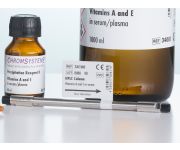 HPLC Column Vitamins A and E in Serum/PlasmaOrder no.: 34100Vitamins A and E in Serum/Plasma - HPLC
HPLC Column Vitamins A and E in Serum/PlasmaOrder no.: 34100Vitamins A and E in Serum/Plasma - HPLC
-
 Vitamins A and E Serum Calibration StandardOrder no.: 34004Vitamins A and E in Serum/Plasma- HPLC/UHPLC
Vitamins A and E Serum Calibration StandardOrder no.: 34004Vitamins A and E in Serum/Plasma- HPLC/UHPLC
-
 HPLC Column Vitamins A and E in Serum/PlasmaOrder no.: 34100Vitamins A and E in Serum/Plasma - HPLC
HPLC Column Vitamins A and E in Serum/PlasmaOrder no.: 34100Vitamins A and E in Serum/Plasma - HPLC


Vitamin A
Vitamin E
Clinical relevance
Vitamins A and E are fat-soluble vitamins, which perform important functions in the body.
Vitamin A plays an important role in vision, bone metabolism, and the synthesis of steroid hormones. Deficiency of vitamin A can lead to night blindness, skin dehydration, and hair loss.
Vitamin E protects, among others, unsaturated fatty acids in the cell membranes and the LDL cholesterol from attacks by reactive radicals, which can occur as a result of increased oxidative stress in the body. Deficiency of vitamin E can lead to permanent joint pain, making the determination of vitamin E levels essential in this case.
However, overdoses of these vitamins may cause hypervitaminosis with intoxication symptoms. In addition, chemotherapies should not be "accompanied" by extra vitamin supplements – especially high doses of vitamins A and E may limit the success of treatment.
Product advantages
- Specific method
- Easy sample preparation
- Low analysis costs
This established kit allows the simultaneous analysis of vitamins A and E in serum/plasma in a single isocratic HPLC run with UV detection. An easy sample preparation is initiating the effective protein precipitation step. A stable internal standard is used for precise quantification.
Chromsystems offers additional kits for the fast and efficient determination of vitamins A and E. You can choose between several options depending on the device capabilities (HPLC or UHPLC) and the sample quantities in your laboratory. Alternatively, the kit 34000/Premix with simplified sample preparation in premixed tubes is available, as well as the 34900/UHPLC kit for higher sample throughput and using UHPLC determination. Our kits are also available with automated workflow (34700/F and 34900/F).
| Method of Analysis | HPLC |
|---|---|
| Number of Tests | 100 |
| Please note | The freely available information on this website, in particular on the sample preparation, are not sufficient to work with our products. Please read instructions and warning notices on products and/or instruction manuals. |
| Lower Limit of Quantitation | Vitamin A: 0.02 mg/l |
| Upper Limit of Quantification | Vitamin A: 0.02-5.0 mg/l |
| Intraassay | Vitamin A: CV ≤ 2.5 % Vitamin E: CV ≤ 2.4 % |
| Interassay | Vitamin A: CV ≤ 5.0 % Vitamin E: CV ≤ 4.9 % |
| Recovery | Vitamin A: 106 %; Vitamin E: 101 % |
| Specimen | Serum/Plasma |
| Sample Preparation |
|
| Run Time | approx. 9 min |
| Injection Volume | 50 µl |
| Flow Rate | 1.5 ml/min |
| Column Temperature | ambient (~ 25 °C) |
| Gradient | Isocratic |
| Wavelengths | 325 nm, after 3.5 min switch to 295 nm |
| Additional Info | For the analysis any isocratic HPLC system with UV detector is suitable. For simultaneous analysis of the vitamins A and E, a detector with programmable wavelength switching is very useful as these vitamins are detected at different wavelengths. |
| Parameters | Vitamin A (Retinol), Vitamin E (α-Tocopherol) |
-
 Vitamins A and E Serum Calibration StandardOrder no.: 34004Vitamins A and E in Serum/Plasma- HPLC/UHPLC
Vitamins A and E Serum Calibration StandardOrder no.: 34004Vitamins A and E in Serum/Plasma- HPLC/UHPLC
-
 HPLC Column Vitamins A and E in Serum/PlasmaOrder no.: 34100Vitamins A and E in Serum/Plasma - HPLC
HPLC Column Vitamins A and E in Serum/PlasmaOrder no.: 34100Vitamins A and E in Serum/Plasma - HPLC
-
 Vitamins A and E Serum Calibration StandardOrder no.: 34004Vitamins A and E in Serum/Plasma- HPLC/UHPLC
Vitamins A and E Serum Calibration StandardOrder no.: 34004Vitamins A and E in Serum/Plasma- HPLC/UHPLC
-
 HPLC Column Vitamins A and E in Serum/PlasmaOrder no.: 34100Vitamins A and E in Serum/Plasma - HPLC
HPLC Column Vitamins A and E in Serum/PlasmaOrder no.: 34100Vitamins A and E in Serum/Plasma - HPLC

